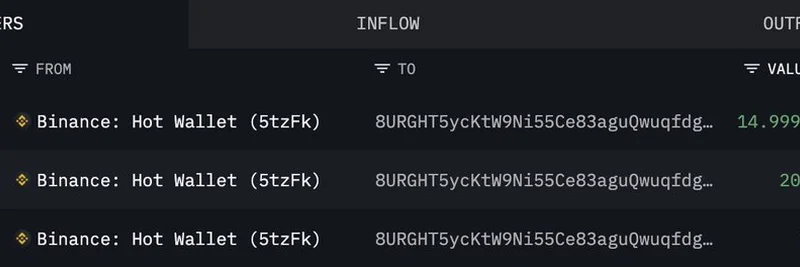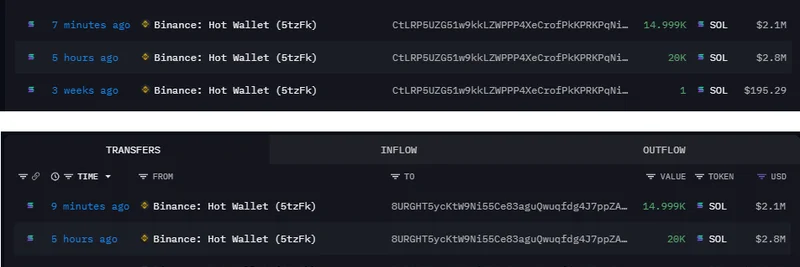In the fast-paced world of crypto, it's easy to get caught up in the hype. But every now and then, a framework comes along that cuts through the noise and forces us to rethink our assumptions. Recently, DeFi expert Ignas (@DefiIgnas on X) shared a compelling take on Santiago R. Santos' (@santiagoroel on X) latest thesis, using a quadrant model inspired by Peter Thiel's thinking. This setup divides crypto beliefs into obvious truths, obvious falsehoods, non-obvious truths, and non-obvious falsehoods. It's a tool that reveals your worldview on the market—and potentially spots where the real opportunities lie.
The original spark came from Santos' Substack post, "Why Your Coin Isn’t Pumping", where he breaks down why crypto prices are lagging despite milestones like ETF approvals and growing adoption. Ignas visualized this into a handy graphic, borrowing the structure from investor Matti Gags (@mattigags on X). The idea? Spend some time filling your own version to clarify what you believe is priced in versus what's flying under the radar.
Breaking Down the Obvious Truths
Let's start with what's staring us in the face—or at least, what should be. According to this framework, crypto has shed its "scam" label for good. With institutions piling in and regulators warming up, it's no longer the Wild West. But here's the rub: alt-L1 narratives (that's alternative Layer 1 blockchains like Solana or Avalanche, competing with Ethereum) feel shaky. They're built on promises of speed and scalability, yet the market isn't buying it hook, line, and sinker.
Another obvious one? AI is stealing the spotlight as the main trade right now. Blockchain revenue is cyclical, tied to market booms and busts rather than steady income streams. Think of it like a casino: the house wins big during rushes, but it's not reliable SaaS-style revenue (Software as a Service, where companies like Salesforce charge predictable subscriptions). Infrastructure— the backbone tech like nodes and protocols—is priced as if explosive growth is a sure thing, assuming 100x more users tomorrow.
The Obvious Falsehoods We Still Debate
On the flip side, some ideas just don't hold water anymore. Ethereum (ETH) and Solana (SOL) aren't "cheap" even after factoring in staking yields—those passive rewards from locking up tokens to secure the network. Staking might sound like easy money, but it's often just inflation in disguise, diluting value over time.
Layer 1 blockchains don't deserve sky-high valuations like tech giants, because their earnings are volatile. High transaction fees? Sure, they generate revenue, but it's not stable—it's more like event-driven spikes. Investing in infra alone won't magically attract users; you need killer apps and real-world utility. And those massive token multiples (price surges) we saw in past cycles? They're not justified in today's more mature market.
Digging into Non-Obvious Truths
This is where it gets interesting—and potentially profitable. Markets eventually stop buying into stories when the fundamentals (like actual user growth or revenue) lag behind. Staking rewards aren't true value capture; they're more like printing money to pay security guards, which waters down everyone's share.
Layer 2 solutions (L2s, which scale Ethereum by handling transactions off the main chain) are draining value from ETH itself, capturing the upside while leaving the base layer with scraps. Blockspace—the digital real estate for transactions—is becoming a commodity, meaning prices will drop as supply increases. The winners? User aggregators, like apps or platforms that bundle services for convenience.
The real upside in crypto might not come from building new chains but from plugging blockchain rails into existing businesses. For meme token enthusiasts, this means looking beyond pumps: integrate memes with real utility, like community-driven finance or viral marketing tied to established brands, to capture lasting value.
Non-Obvious Falsehoods That Could Trip You Up
Finally, the sneaky lies. Adoption isn't just about "number go up"—prices rising doesn't equal real progress. Corporates won't flock to public chains out of some ideological love for decentralization; they'll go where the economics make sense, even if it's private or hybrid setups.
Today's Layer 1 winners, like Solana with its speed or Ethereum with its ecosystem, won't necessarily dominate the next decade—tech evolves fast. Token prices don't validate underlying tech success; a meme coin can moon on hype alone, but that doesn't mean it's built to last. And users? They care way more about convenience (easy wallets, seamless swaps) than raw TPS (transactions per second).
Tying It Back to Meme Tokens
At Meme Insider, we're all about the wild world of meme tokens—those viral, community-fueled assets that can skyrocket overnight. This framework shines a light on why many memes fizzle: they're often built on obvious falsehoods, like assuming hype equals sustainable value. But the non-obvious truths offer a playbook. Meme projects that aggregate users (think social platforms or gamified DeFi) or plug into real businesses (like branded merch or NFT integrations) could be the next big thing.
Santos points out crypto's over-investment in infra versus under-investment in products. For memes, that means shifting from pure speculation to building fun, user-friendly experiences. As blockspace commoditizes, meme tokens tied to aggregators—perhaps viral apps on Solana or Ethereum L2s—stand to win big.
If you're deep in memes, take Ignas' advice: build your own quadrant. It might reveal why your favorite dog-themed coin isn't pumping—and where to look next for alpha.
For more on this, check out Santos' full post on Substack and follow Ignas for daily DeFi breakdowns. What's your take on these quadrants? Drop your thoughts in the comments below.



